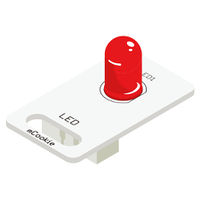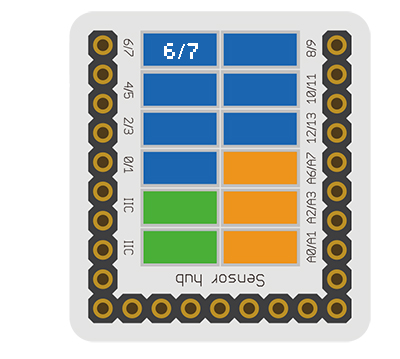Difference between revisions of "Sensor-LED"
From Microduino Wiki
(→Introduction of the Sensor Pin) |
|||
| Line 3: | Line 3: | ||
| | | | ||
| | | | ||
| − | [[File: Microduino-LED-rect-v1.jpg|400px|thumb|right|mCookie- | + | [[File: Microduino-LED-rect-v1.jpg|400px|thumb|right|mCookie-SingleLED]] |
The product number of mCookie Sensor—LED: '''MSDL11''' | The product number of mCookie Sensor—LED: '''MSDL11''' | ||
| − | The LED controlled by GPIO directly has red, green, and yellow | + | The LED controlled by GPIO directly has three color types: red, green, and yellow. |
Revision as of 17:46, 3 April 2017
| Language: | English • 中文 |
|---|
|
The product number of mCookie Sensor—LED: MSDL11 The LED controlled by GPIO directly has three color types: red, green, and yellow.
ContentsIntroduction of the Sensor Pin
Features
Specification
Document
DevelopmentProgram Download
Programming
Hardware Setup
Result
Application
ProjectsPurchaseHistoryGallery
|


